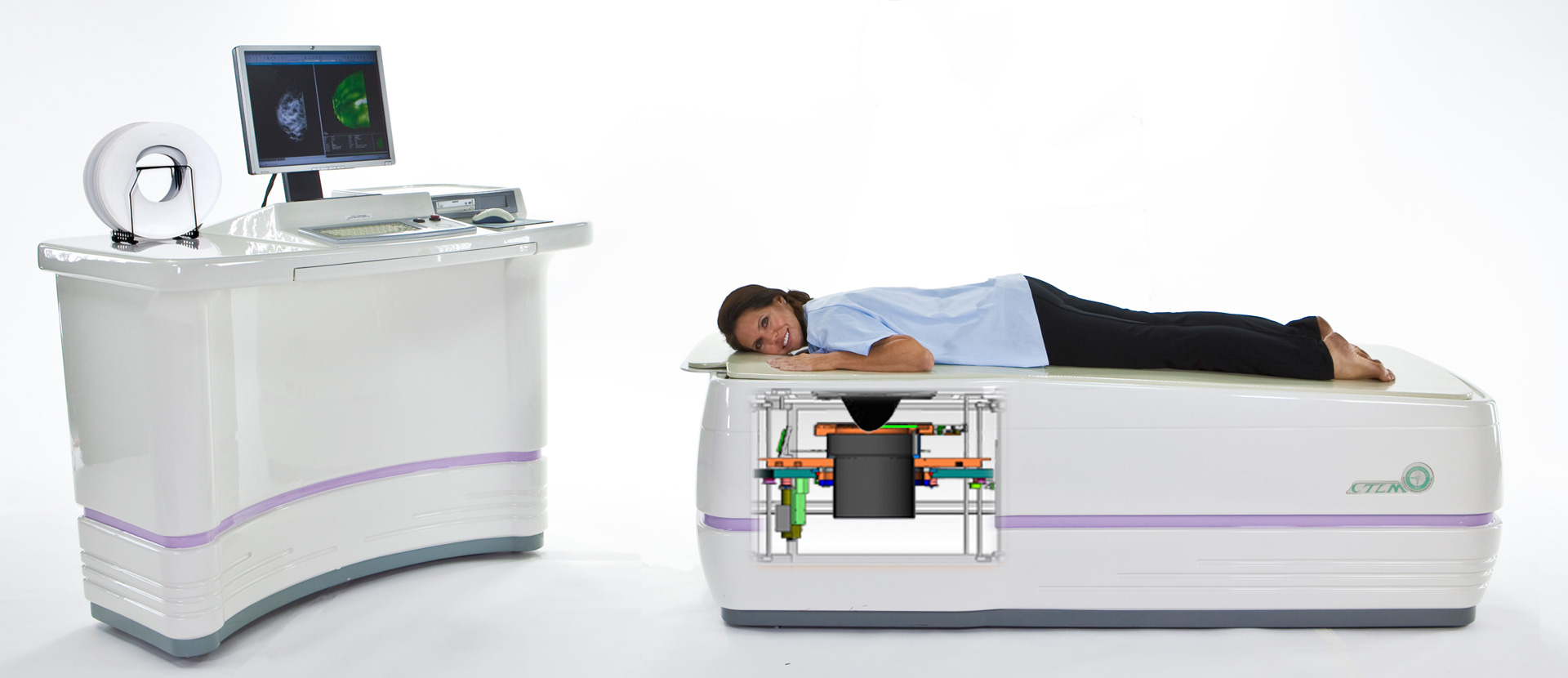Frequently Asked Questions About The CTLM®
A breast imaging modality similar to a CT scanner but uses a laser energy source in place of an ex-ray tube. There is no iionizing radiation, breast compression or contrast injections. It produces true 3D tomographic images based on the distribution of the blood within the breasts.
A patient lies face down on the scanning table with one breast suspended in the scanning aperture. The laser beam scans the entire breast starting at the chest wall and ending at the nipple. The data is acquired by our patented array of specialized detectors, where it is reconstructed by our proprietary computed algorithms to create three-dimensional cross sectional images of the breast.
Not currently, the CTLM® is being positioned as an adjunct to conventional breast screening modalities.
A CTLM® examination can be performed during anytime of the month or day and does not require special preparation of any kind. But, since it is currently an adjunctive breast imaging modality, an approved breast screening modality must be utilized in conjunction with the CTLM®.
The CTLM® reconstructs the image while the scanning is in process.
Yes, since it does not expose the patient to ionizing radiation a person can be scanned as often as needed.
The CTLM® is not yet approved in the in the United States, but is available internationally. The Food and Drug Administration process is pending. Please review the current CTLM® distributors outside the United States.




Facts About CTLM® And Optical Imaging:
- CTLM® – Computed Tomography Laser Mammography is part of the emerging field of optical imaging.
- Scientific data has demonstrated that CTLM® images angiogenesis. Angiogenesis is a requirement for any process in the breast that has increased metabolic demands such as invasive and in situ cancers.
- CTLM® does not use ionizing radiation (no x-rays).
- CTLM® was designed as an adjunct to mammography and ultrasound for imaging dense breasts.
- There is NO breast compression with CTLM® and the breast hangs in the machine opening in it’s natural position.
- In a study of over 100 women, including 30 with breast cancer, optical imaging increased sensitivity and specificity of breast cancer detection by more than 90% (Britton Chance, Molecular Imaging, Vol. 2 #2)
- CTLM® – Computed Tomography Laser Mammography provides additional biological information that may be useful in assisting with the early detection of breast cancer and/or clinically relevant anomalies.

